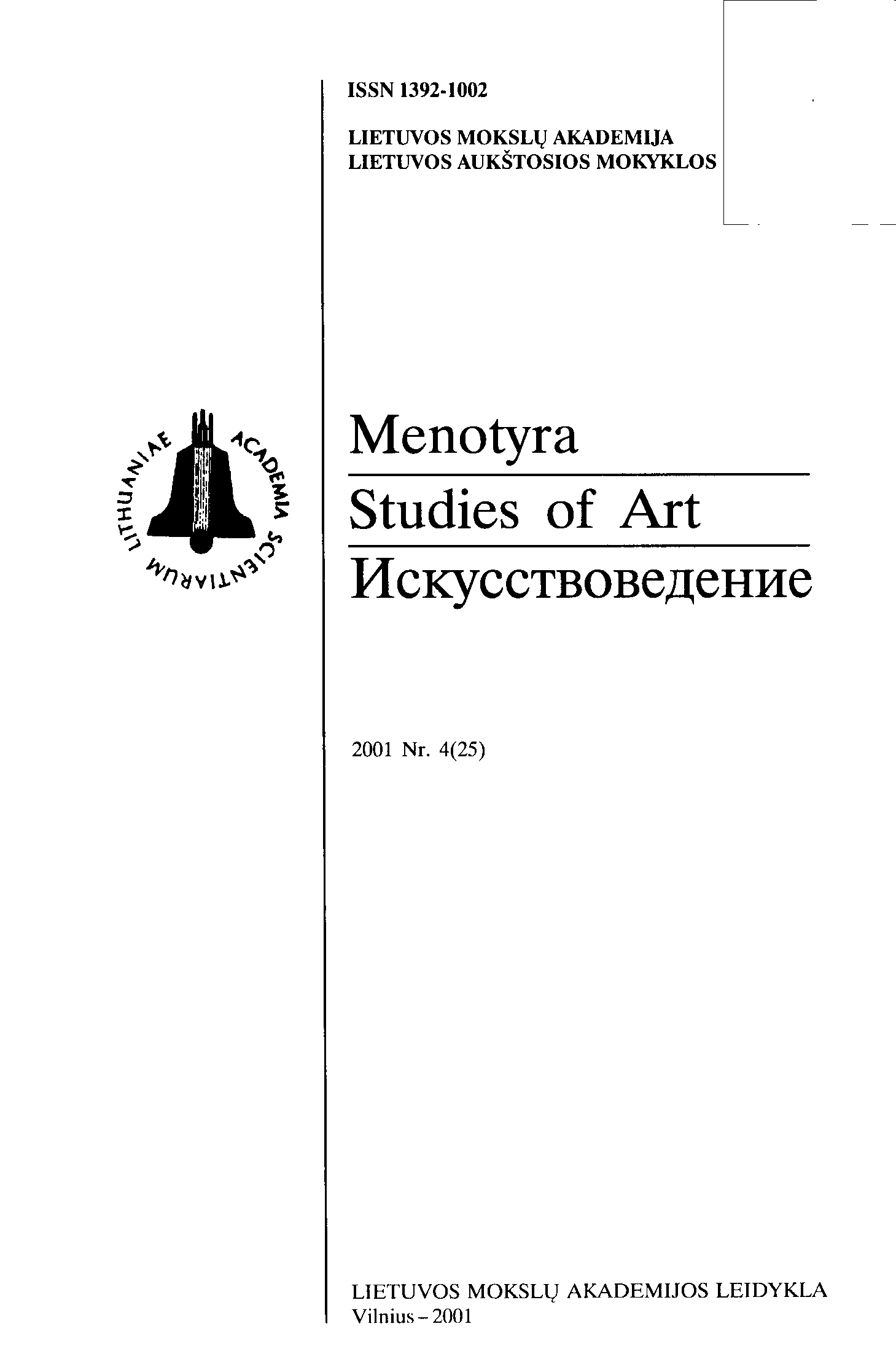XX a. 10-ojo dešimtmečio Lietuvos dailės parodų muziejinės tendencijos
Museological tendencies in the Lithuanian art exhibitions of the 1990s
Author(s): Lolita JablonskienėSubject(s): Museology & Heritage Studies, Visual Arts, Aesthetics
Published by: Lietuvos mokslų akademijos leidykla
Summary/Abstract: The reflection of museum in Western art philosophy and art criticism in the second half of the 20th century bears a critical character. A review of the opinions expressed in the articles by Lithuanian art critics, artists and art administrators on the museum subject shows that in Lithuania there dominate a contrary situation. The apologetics of museum is a common tune.In the nowadays field of art, it is the socially approved media, in the first place exhibitions, where narratives, expedient stories forming public opinion are created and presented. These narratives enable the agents of the art field to legitimate their work and to fill it with a certain meaning in the system of sociocultural values.The hierarchy of the 20th-century art values legitimated by the academic Lithuanian art history is still valid today. It is witnessed by dozens of solo exhibitions held in the last decade in the Lithuanian museums. A new exhibition tendency of the 1990s is the expansion of the traditional historical narrative, embracing other historical periods, artists and their groups as well as an aspiration to link up certain contemporary art tendencies and artists into the general line of the development of art in the 1st half of the 20th century. The picture of Lithuanian art in the 20th century is based here on legitimized national and international narratives of the concise development of art.Alongside these projects, the 1990s saw different types of exhibitions, which were transforming such a symbolic scheme and opening new discourses. All of them demonstrate museological aspirations aiming to legitimate a particular interpretation of Lithuanian art history of the 20th century. These exhibitions are often based on the analysis of a specific sociocultural context of the presented phenomena, legitimizing them through arguments born in a non-artistic sphere.
Journal: Menotyra
- Issue Year: 2001
- Issue No: 4(25)
- Page Range: 35-39
- Page Count: 5
- Language: Lithuanian

